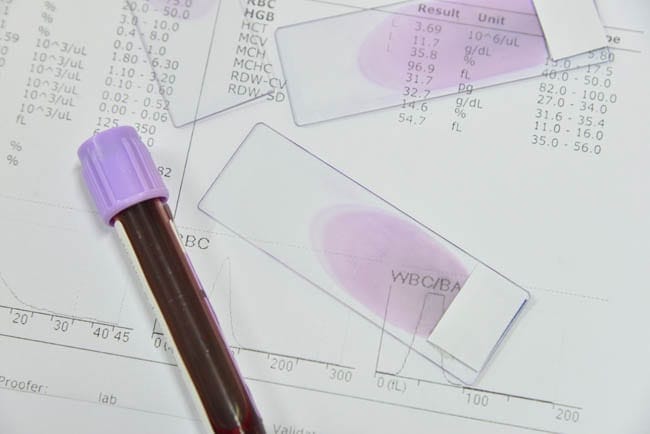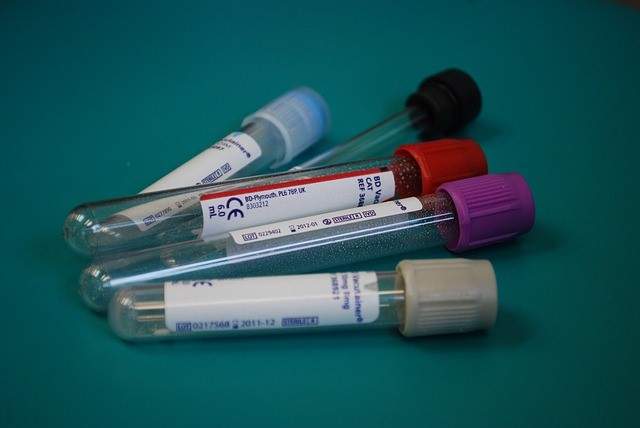Most of our cats at some time or another have needed to have diagnostic tests to evaluate their health. There are routine tests and specific tests when your veterinarian suspects your cat may have a disease or injury. We will look at routine tests for cats and what they look for.
Baseline tests

These consist of three tests that your veterinarian can run when your cat has his annual check-up, before surgery and to determine the overall health of your cat if he is unwell. The three most common tests are:
Biochemical profile – This blood test assesses the function of the liver and kidneys as well as checks electrolyte and mineral balances, blood protein, glucose, and circulating liver enzymes. These tests can help to diagnose electrolyte and mineral imbalances, diabetes, kidney and liver disease.
Complete blood count (CBC) – A measurement of the different blood components, red blood cells, white blood cells, and platelets. The CBC can diagnose anemia, leukemia, thrombocytopenia (low platelets) and many more diseases.
Urinalysis test (UA) – A test of the cat’s urine to evaluate its concentration and to look for abnormalities such as urine pH, protein or glucose, bilirubin, ketones, urinary crystals, blood, and bacteria.
Fecal tests

Fecal flotation – A small amount of the cat’s stool is placed in a tube and mixed with sodium nitrate solution. The feces is strained into a flotation cup, a glass coverslip is placed over the top, and the solution is left for 10 minutes and then evaluated under a microscope to look for the presence of parasitic eggs and oocysts.
Centrifugal fecal flotation – Similar to fecal flotation, however, the sample is placed in a test tube and spun at high speeds. This technique has a higher success rate of egg and oocyst detection than fecal flotation.
Direct smear (fecal) – A sample of feces is placed on a slide, and a small amount of saline is added and is then examined under a microscope.
Sedimentation – This tests the feces for larger parasite eggs that are too heavy to float to the top.
Diagnostic imaging
X-ray – A form of electromagnetic radiation creates images of the inside of the cat’s body. X-rays easily pass through soft tissues but not dense tissues such as bones, joints, and teeth, making them easier to visualise on film.
Due to radiation, x-rays cannot be used on pregnant cats due to the risk to the unborn kittens. Medical staff (who typically perform x-rays daily) must take care and wear lead aprons, gloves, goggles, and thyroid shields.
Ultrasound – Ultrasonic waves visualise the soft structures inside the body such as organs, muscles, tendons, joints and blood vessels.
Magnetic resonance imaging (MRI) – An MRI is an advanced imaging technique that uses powerfully magnetic and radio waves to produce a much clearer 3-dimensional image of the internal structures of the body compared to that of an x-ray or ultrasound.
Computed tomography scan (CAT or CT) – Powerful imaging using x-ray and computers to produce high-quality 3-dimensional images of the internal structures of the body.
Echocardiogram – An ultrasound of the heart.
Other
Heartworm test – This blood test looks for the presence of immature heartworm larvae in the blood.
Titre test – A test to check immunity for certain diseases in the cat’s blood. This test measures antibodies and can help veterinarians (and caregivers) determine if a cat is still protected against diseases for which there is a vaccine such as feline herpes and calicivirus.
Electrocardiogram (ECG/EKG) – A recording of the electrical activity of the heart.
Cytology – An examination of cells from the body to evaluate for infection, inflammation, parasites, and tumours.
Histopathology – The evaluation of a biopsy sample of whole tissues (such as a cancerous tumour).
Enzyme-linked immunosorbent assay (ELISA) – A test to measure viral antibodies to FIV or FeLV in serum (the clear portion of blood).
- Small wells are coated with the viral antigen and serum is added.
- If the cat’s blood serum contains antibodies to the particular viral antigen, they will bind to the antigen in the well.
- The well is washed to remove any unattached antibodies.
- Secondary antibodies against cat antibodies are added to the well, which binds to the cat’s antibodies. These antibodies are conjugated (bonded) to an enzyme.
- The well is washed again, and an enzyme-substrate is added. The interaction with the enzyme-substrate with the enzyme on the secondary antibodies will cause the substrate to change colour.
Polymerase chain reaction (PCR) – This test amplifies small segments of DNA and is used to diagnose several viral, bacterial and protozoal infections from blood or stool samples.
Tracheal wash – A procedure to determine the cause of coughing and breathing difficulties in cats. The cat is given light sedation, and then a plastic tube is inserted into the trachea (windpipe), and a small amount of sterile solution is flushed into, and back out and then evaluated.
There are dozens of additional tests veterinarians can use to diagnose disease which is beyond the scope of this article.
At a minimum, cats should receive baseline (complete blood count, biochemical profile, urinalysis and heartworm) tests during their annual examination. Baseline tests give your veterinarian an idea of the cat’s overall health and can pick up (and treat) many diseases before the cat shows clinical signs. For example, a cat will have lost 70% kidney function before it will show symptoms of the disease.

